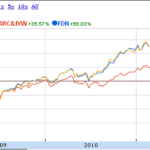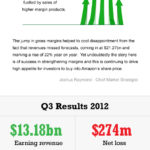One of the key tenants of successful investing is proper diversification. Â But can diversifying assets and classes be taken to such an extreme that it’s detrimental to returns? Â Back when I was a more active investor trading individual stocks on a more routine basis, I used to question the wisdom of professional fund managers owning hundreds of stocks and trying to “beat the market” when virtual market correlation occurs with like 25 holdings or more. Â But then you start branching out into various asset classes, often with zero or even negative correlation, and then you start to wonder if the individual investor is going overboard. Â Thinking through some key asset classes, here are some thoughts on performance, correlation and where the proper mix may lie:
- Stocks – This is the old standby, and in terms of conventional asset classes, over decades-long periods of time, tend to deliver 8% or greater returns when considering dividends. Â Volatility is high though, which many investors cannot stomach, especially over short periods.
- Bonds – Bonds had traditionally been the antidote to the volatility of equities, which a rather predictable yield and relatively steady volatility. Â However, with the various QE schemes, there has been so much money thrown at bonds, that yields have reached generational lows and many feel investors could be really burned by a major bond selloff within the next few years. Â Many professionals don’t view bonds as the safe haven they used to be.
- Gold – Gold had garnered a lot of attention over the past few years as a “store of value” and alternative to fiat currencies, but gold too has sold off of late. Â While many suggest a 5-10% balance in total assets, I personally don’t see much value in holding gold. Â In a state of inflation, I’d sooner hold real estate or dividend paying stocks. Â Gold pays no dividend and can sell off just as quickly as stocks when margin calls come in.
- Real Estate – The beauty of real estate is leverage and income. Â Owning individual real estate comes with incredible capital and time commitments, especially up front. Â But this can end up yielding the greatest net return of all asset classes if done right. Â An easier approach is REITs, but returns are likely to be muted. Â Many REITs yield north of 5% though and tend to track roughly with the market at large in terms of price appreciation.
- Other/Alternative – This can span everything from currencies to niche sectors like art, wine, collectibles and land to even the newfangled Bitcoin phenomena (of which I am not a fan by the way). Â Peer lending is another alternative source of income.
At the end of the day, a key reason for diversifying into low/negative correlation assets is so you can sell when the market crashes and rebalance. Â Or, if you actually needed the funds in the interim, you could sell off your strongest performing assets while they’re high as an artificial rebalancing scheme, whereas if everything crashes together, you’re selling low. Â My thoughts on this though, are that, during a true market crisis, even non-correlated assets can all sell off. Â We saw during the financial crash, flash crash and other panics, that when equities sold off, so did gold, commodities, real estate and other asset classes that people traditionally used to diversify out of stocks.
Secondarily, it begs the question as to your time horizon. Â If you plan on being in the market for the next 30 years (say, 401(k) fund selection considerations), does it really matter whether you have diversification if you don’t intend on ever selling during that period? Â Or, rather, should you instead focus solely on what would be likely to delivery the greatest possible return by the end of the period (equities)? Â For this reason, I tend to keep my investment funds in retirement accounts set at near 100% equities.











{ 0 comments… add one now }